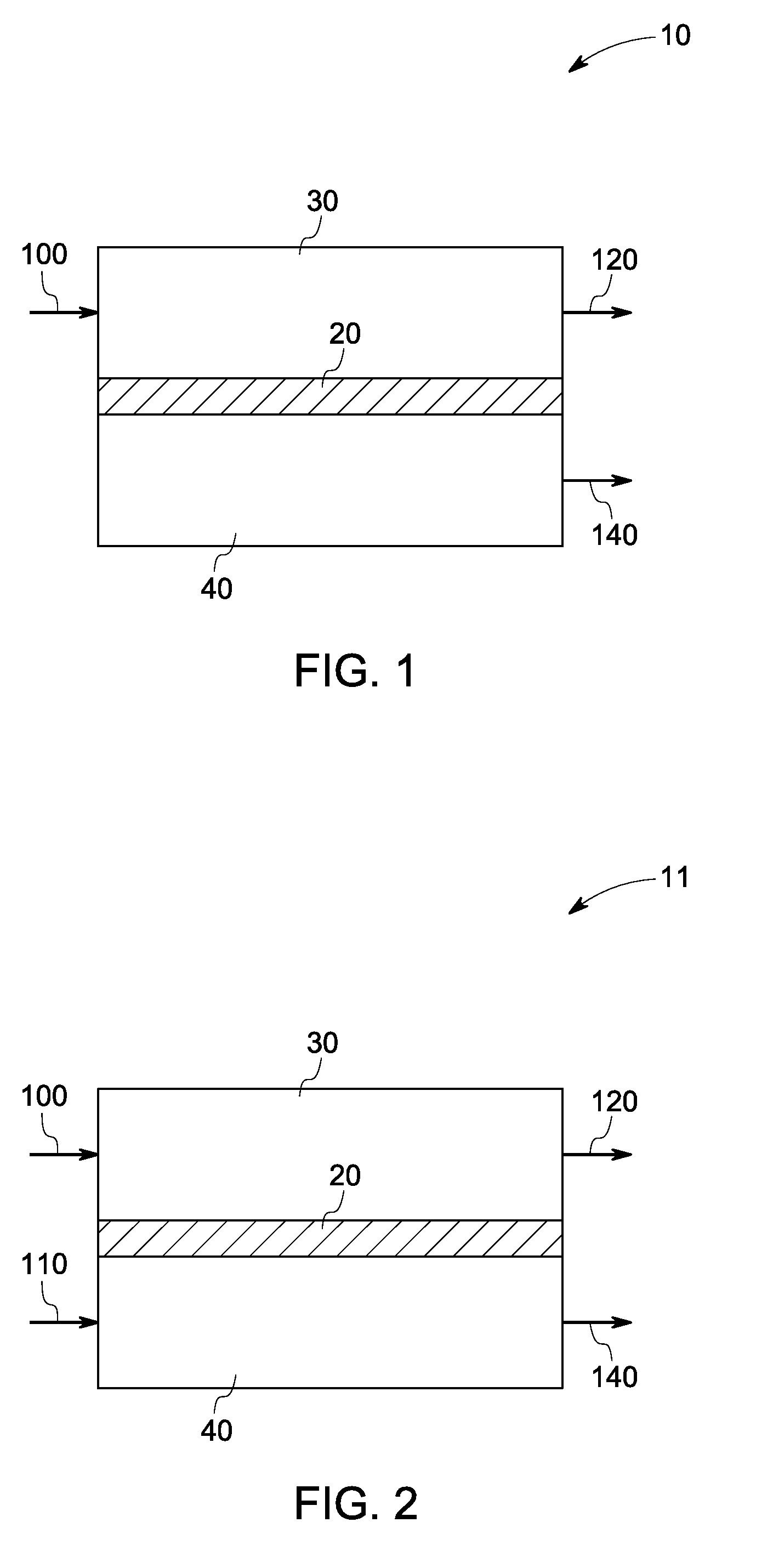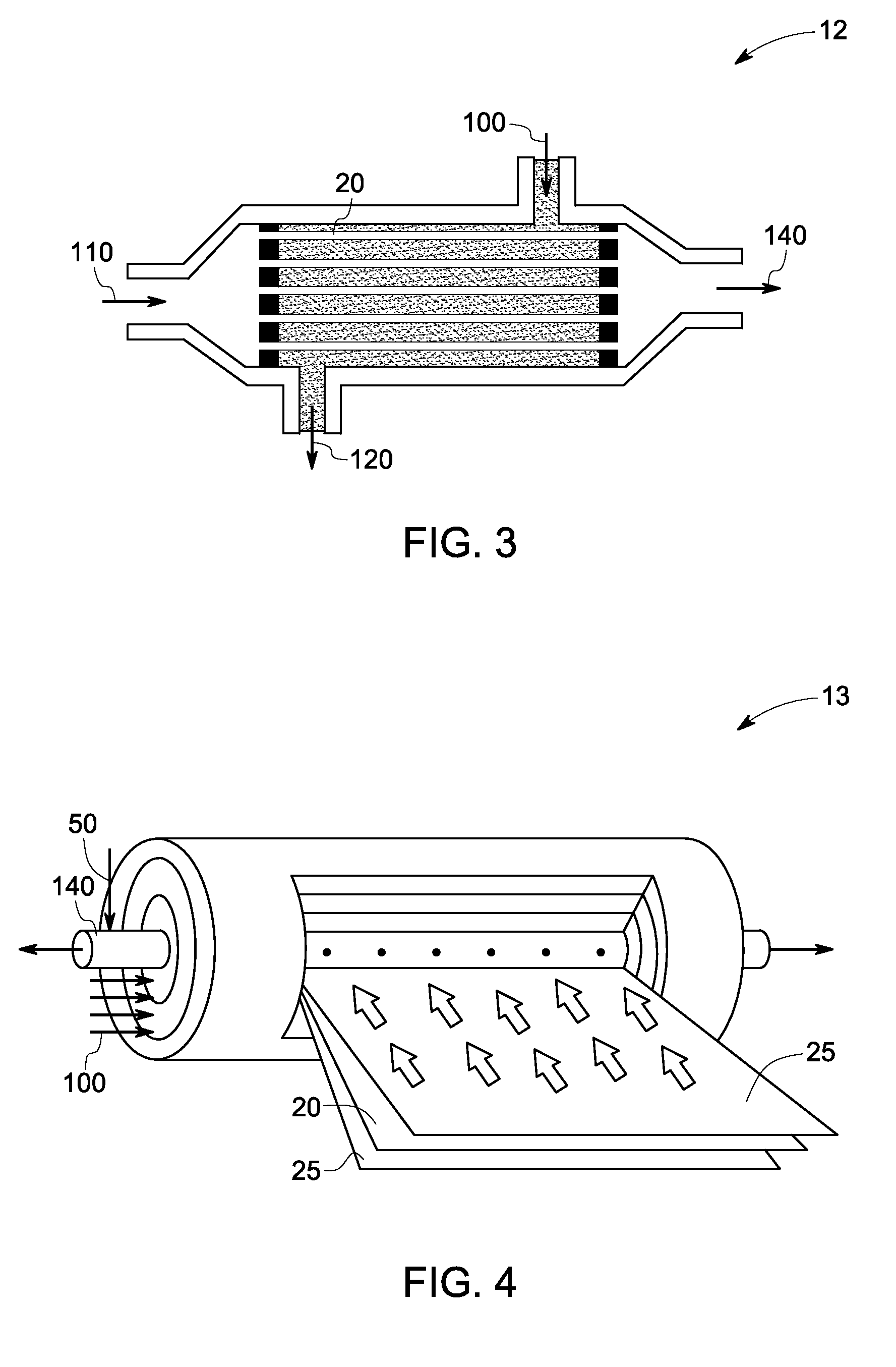Membrane separation
a membrane and membrane technology, applied in steam use, machine/engine, energy input, etc., can solve the problems of complex internal arrangement, impracticality, and complicated use of spiral wound membrane modules, and achieve the effect of improving separation ra
- Summary
- Abstract
- Description
- Claims
- Application Information
AI Technical Summary
Benefits of technology
Problems solved by technology
Method used
Image
Examples
example 1
[0062]A model was developed for separation of CO2—N2 mixture into its components—CO2 and N2. The CO2—N2 mixture stream is sent to a co-current flow, hollow fiber membrane separation module equipped with CO2 selective membranes. The permeability of CO2 through the membrane is about 110 barrer. The model is based on a feed flow of about 88000 lbmol / hr with about 14 mol % of CO2 and about 75 mol % of N2, approximately equivalent to exhaust gas flow from a 300 MW power plant. The feed stream is available at a pressure of 200 psia. A single membrane module has a membrane surface area of 100 m2 and 1000 such modules in parallel are used to process the available feed flow. Thus total membrane area available for separation is 0.1 km2. Steam is used as a sweep fluid, noting the fact that permeability of H2O:CO2 is 100. Thus, steam quickly permeates through the membrane acting as a sweep fluid as described in the embodiments of the present invention. The separation of CO2 and H2O may be done ...
example 2
[0064]In the second example, effect of feed pressure on effectiveness of CO2 separation is studied. Other parameters remain the same as the previous example, only the sweep flowrate is fixed at 20000 lbmol / hr and the feed pressure is varied between 100-300 psia.
[0065]The results are shown in FIG. 11, which is a graph generically shown as 400. It illustrates the effect of feed pressure (shown as X-axis) on percent CO2 separation (shown as Y-axis). Line 410 shows the effect of adding a sweep component on the permeate side (conventional method) and line 420 shows the effect of adding a sweep component on the feed side (as suggested by embodiments of the present invention). It is seen that for the addition of sweep stream on either side of the membrane produces the same CO2 separation, irrespective of the feed pressure. Again, the embodiments of present invention provide for a comparable performance with less apparatus complexity (since no modification of the existing equipments is requ...
example 3
[0066]In this example, the effect of sweep pressure on effectiveness of CO2 separation is studied. Other parameters are maintained at the same values as the previous example, only the sweep pressure is varied between about 14.7 psia to about 88.2 psia (about 1 atm to about 6 atm) and the feed pressure is fixed at 200 psia.
[0067]The results are shown in FIG. 12, which is a graph generically shown as 500, which illustrates the effect of sweep pressure (shown as the X-axis) on percent CO2 separation (shown as the Y-axis). Line 510 shows the effect of adding a sweep component on the permeate side (conventional method) and line 520 shows the effect of adding a sweep component on the feed side (as suggested by embodiments of the present invention). It is seen that for both methods of operation, same CO2 separation is obtained, irrespective of the sweep pressure. Yet again, the embodiments of present invention provide for a comparable performance with less apparatus complexity (since no mo...
PUM
 Login to View More
Login to View More Abstract
Description
Claims
Application Information
 Login to View More
Login to View More - R&D
- Intellectual Property
- Life Sciences
- Materials
- Tech Scout
- Unparalleled Data Quality
- Higher Quality Content
- 60% Fewer Hallucinations
Browse by: Latest US Patents, China's latest patents, Technical Efficacy Thesaurus, Application Domain, Technology Topic, Popular Technical Reports.
© 2025 PatSnap. All rights reserved.Legal|Privacy policy|Modern Slavery Act Transparency Statement|Sitemap|About US| Contact US: help@patsnap.com



